This was published 7 years ago
Peruvian Amazon retreat: Dodging jaguars and piranhas
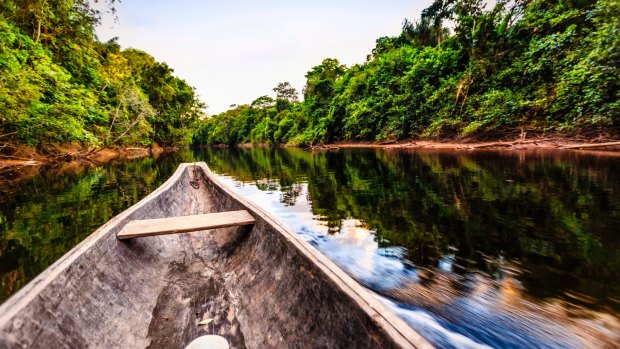
Each guest is assigned their own naturalist guide who will accompany them on any excursion they choose.Credit: Alberto Pomares
My guide, Pedra Lima, and I like to play games with each other in the Amazon. The one we're playing now is called 'If I Get Lost In The Jungle, What Would Eat Me First?' Lima knows: "Mosquitos," he says with a snicker. "No, Pedra," I insist. "If I get lost in the jungle, what would eat me whole first?" He looks at me and his eyes widen: "The puma," he says with awe. "The puma would eat you and you wouldn't see it coming; you only see the puma when the puma wants you to see the puma. If they find your body the cuts would be so sharp, your carcass would look OK … not all cut up, just a deep, deep incision." He leans across to me: "Here," he says pointing at my throat.
Lima and I are spending a wonderful afternoon in the jungle looking for creatures that can kill us; although here in the Amazon Basin that doesn't really require much effort. Earlier, I'd almost sat on a wandering spider (which, according to Lima, is 18 times more poisonous than the Black Widow spider and is one of the world's most dangerous spiders). "What would you have done if it bit me?" I ask. "Say goodbye to you," he says without a trace of humour. "There is no anti-venom. But these spider bites are not common." I hadn't seen its web in my path because my focus was on the thousands of leaf cutter ants marching near my feet: did you know that in 24 hours they can defoliate a whole tree? The Amazon is crazy.
Then there were the red-bellied piranhas, though their carnivorous habits have been excitedly embellished by Hollywood for nigh on a century. All the same, when Lima throws a small piece of fruit overboard as we paddle across the perfectly still Lake Condenado, I'm not expecting the sudden bombardment of piranhas beside my outstretched hand. "Be careful," I'd shouted. "Don't worry," Lima tells me. "They are only dangerous if you are bleeding. The blood makes them crazy, like sharks." Lima tells me I should really be watching out for the electric eels in the lake. "They're the most dangerous," he tells me. "They can kill you, they can shoot 700 watts of electricity into you and around here they grow to 2.5 metres long. They give you a heart attack, then you drown."
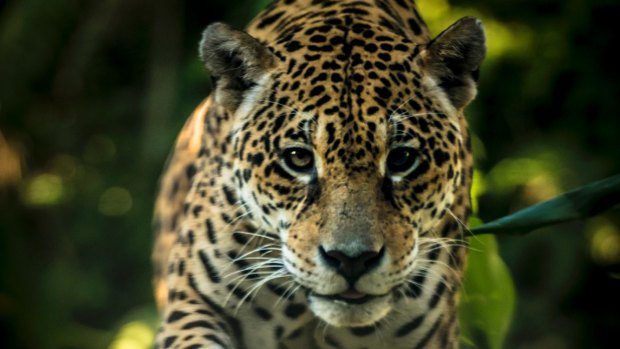
The jaguar is the only extant Panthera species native to the Americas.Credit: iStock
But it's as we're playing the game: "What Would You Do If You Came Face To Face With A Big Cat" that things get really interesting. We're on our way back from the lake to the lodge Refugio Amazonas. We'd stopped to climb the 32 metre-high staircase to the forest canopy. I'd lingered too long for Lima's liking, but the sun was setting in a blaze of smoky orange to the west, across the tallest trees in the Amazon. By the time we'd descended, the forest was almost completely dark, though fire-flies lit our way home.
And it's now, as we make our way through the suddenly silent rainforest – the birds having found their beds for the night – that Lima drops to his knees in the mud. He's studying something on the ground. "Look at this," Lima shines his torch on the spot. "It was not there when we walked through here before," I look down. "It's been here since our footprints," he says this softly. "It's a jaguar, or a puma, it was here not long ago."
And now, the Amazon truly comes alive all around me; the fire flies flash before my eyes messing my night vision and flickering shadows in the undergrowth become a hundred predatory eyes.
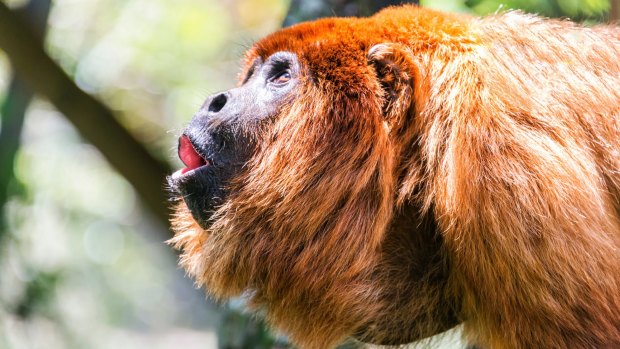
Alpha male of a red howler monkey pack.Credit: iStock
We walk, Lima keeps me talking, he says it's best, though his choice of topics – all things considered – is fairly ordinary: "It was on this trail three years ago walking back from the lake that I saw the only puma I've seen here," he says. "It was 20 metres away, it crossed my path, then it faced me, it walked like a cat… like this." He gets down on all fours on the path.
Through the canopy I can make out a rising three-quarter moon, and I sniff fresh earth and the sharp tang of tree bark, and though my heart is beating fast – or maybe because my heart is beating fast – I'm completely lost in this moment. And so it is that elation mixes with disappointment when I spot the dull lights of home; my haven deep in the Amazon. Voices carry from the four-corner, open-air bar, in the open-plan restaurant, where guests are busy crossing creatures off bucket lists, over icy cocktails and clammy Cusquena beers.
The Facebookers among them are reaching out for feeble radio waves, desperate to show cyber-space the toucans and macaws they caught on camera; the rest are valiantly battling the equatorial humidity under ceiling fans; with the jungle so still, it's the only breeze doing the rounds.
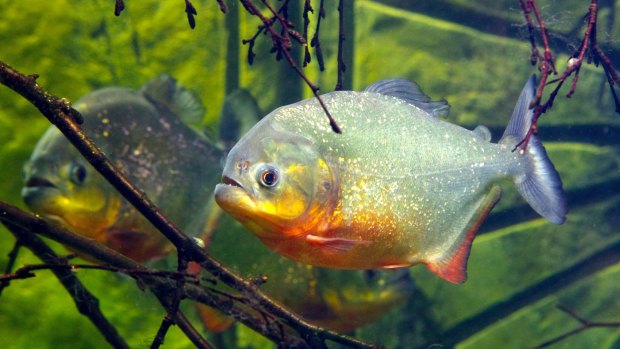
A red-bellied piranha swimming with friends.Credit: iStock
But then Refugio Amazonas never did promise air-conditioning and chocolates under your pillow. While the lodge is certainly luxurious, it's a kind of luxury that comes with rooms open to the forest, where tiny wires that look like spider webs occupy the upper reaches of your ceiling, so as to stop birds and bats from nesting above your head at night. When it's hot round here, the only relief comes courtesy of cold showers – then laying motionless, with no sheets. And don't expect to sleep beyond dawn, unless your ear-plugs block out the murderous screams of the world's second loudest animal, the Red Howler monkey. Electricity shuts off each night at 10, so bring a torch lest you trip in the dark. Though relax, there's a whistle on the wall to attract attention if an anaconda makes it through the thick mozzie screen above your bed – your only line of defence against the creatures of the Amazon.
The trade-off is obvious: I'm sleeping in the middle of a rainforest; from my bed I can see monkeys and parrots, and a forest full of butterflies. I walk between my room and the restaurant by way of a raised platform that at least gives me some sense of security.
But then, isn't this the way living in the Amazon should be? It's low impact, to encourage full immersion so we feel a part of the ecosystem, whether we like it or not. And if you don't; then why would you fly all the way across the jungle and the Andes to the frontier town of Puerto Maldonado, and take a bus down a deserted mud track where locals live in tiny villages in the shade of papaya and banana trees, to an old wooden jetty where a longboat takes you two-and-a-half hours down a mud-brown river that slices its way through impenetrable jungle? If you want the concreted surety of a Best Western, you've sure come to the wrong place.
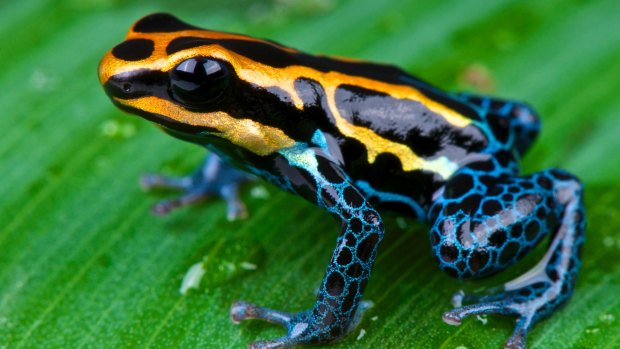
The Amazon dart frog is a bright, colourful frog species found across the Amazon.Credit: iStock
Our journey down the Tombatapa takes us past nothing that even slightly resembles the modern world; the only signs of life I see are fishermen in canoes and a small group of miners on a riverbank panning for gold. We arrive at a tiny wooden jetty, then climb a dirt trail through thick forest to Refugio Amazonas. The sounds of the jungle temporarily stun me; the Amazon is never silent for a moment. Just a few metres from me, a group of tiny tamarind monkeys leap from tree to tree, scuttling down branches, wrestling for fruit.
Each guest is assigned their own naturalist guide who'll accompany them on any excursion they choose. Pedra Lima is an Amazon expert, he was born near here. Most days Lima and I will walk through the rainforest looking for creatures. I discover he's one of those rare types who on hearing any noise can identify the animal which made it by both its common and scientific name. The Attenborough type, you'd call him. On my first morning out, we hear pale-winged trumpeters, saddleback tamarind monkeys, toucans, red-throated cara caras, kingfishers and dry-leaf frogs. As a newcomer to the Amazon, I have nothing to counter his knowledge with, but Lima has an open and honest face, so I nod and act impressed each time he identifies something new to me.
Some days we take a boat further down the Tombatapa to clay licks where macaws and toucans gather, leaving before dawn with the moon still high in the sky, doing battle with the river and its mighty currents: a boat guide at the front directing the driver through shifting sand banks. The heat is less oppressive when we take to the river, a breeze offering rare relief.
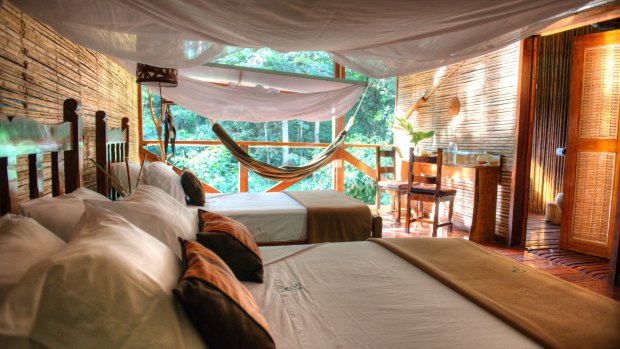
Rooms are open to the creatures of the forest at Refugio Amazonas.Credit: Refugio Amazonas
Each time I return to the refuge, I take my usual seat at the bar and listen to the stories: the largest anaconda, the closest macaw, the most playful monkey, the jaguar that got away. But as I hear them all from within the presumed sanctity of a jungle bar in a jungle refuge built without walls in the wildest rainforest on this earth, I can't help wondering who's really watching who here.
TRIP NOTES
MORE INFORMATION
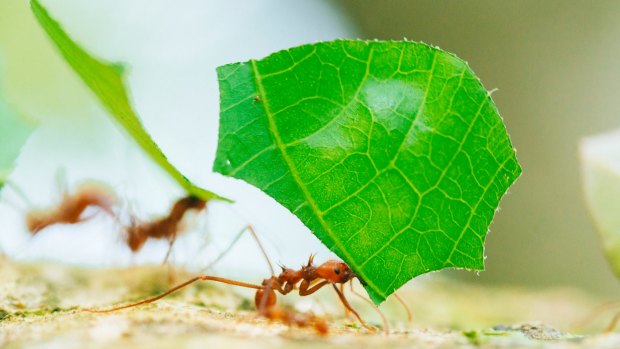
Ants hard at work together.Credit: iStock
GETTING THERE
LATAM Airlines operate seven one-stop flights each week from Sydney to Santiago with onward connections to Puerto Maldonado, and four non-stop flights per week in codeshare partnership with Qantas. Phone 1 800 126 038; see latam.com
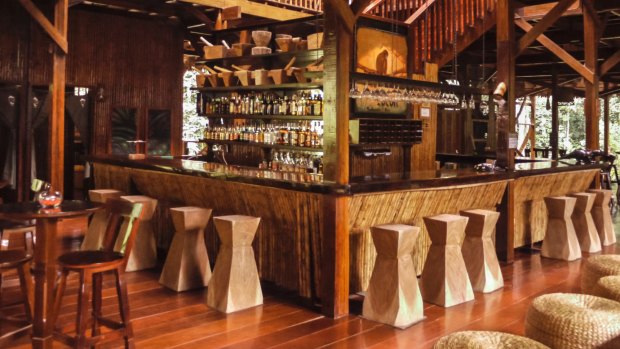
The best place in Refugio Amazonas to compare what animals you saw today.Credit: Refugio Amazonas
STAYING THERE
Stay at Refugio Amazonas for four days/three nights from $939 per person, including all meals, guided jungle excursions and transfers from Puerto Maldonado airport. A portion of the profits go back to local communities. See perunature.com
Craig Tansley travelled courtesy of Refugio Amazonas and LATAM Airlines
Sign up for the Traveller Deals newsletter
Get exclusive travel deals delivered straight to your inbox. Sign up now.